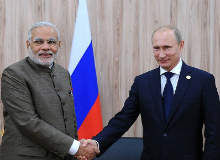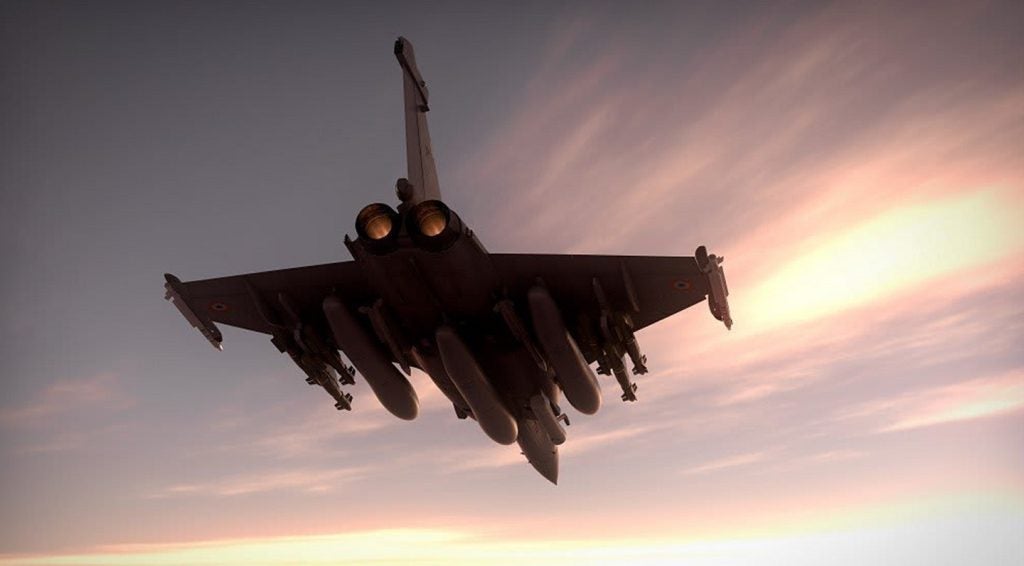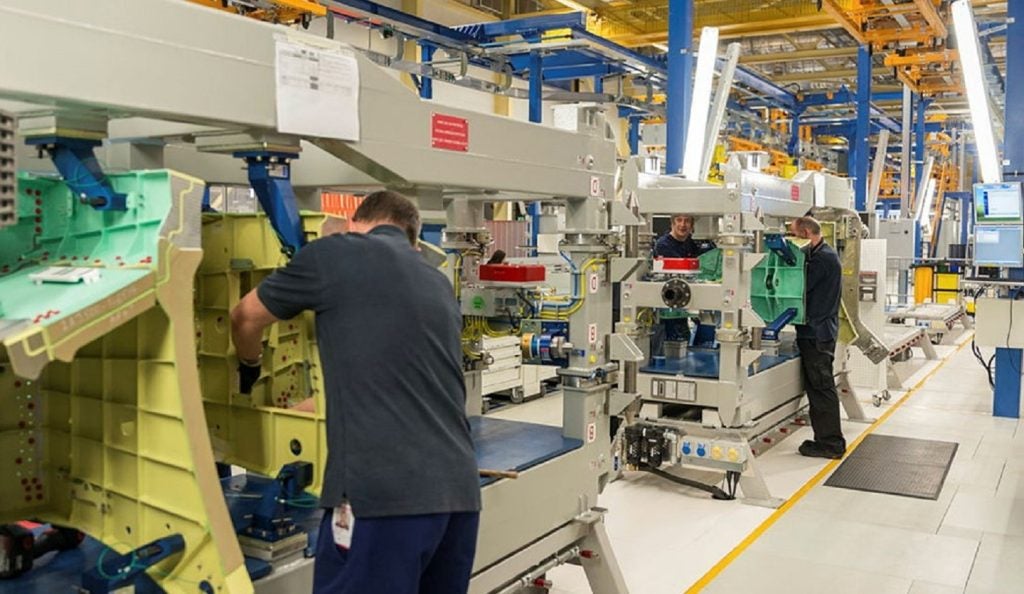

Russia is a country dependent on the export of defence technologies and hydrocarbon products to sustain its fragile economy. With a near-shutdown of oil and gas sales to the West in the post-Ukraine sanctions paradigm, the country has shifted substantial resources into securing and expanding its global defence technology market.
It can be argued that, in the past, Russia has sought to maintain a low profile in regional conflicts around the world in order to remain a defence supplier to various opposing parties. However, since the destruction of Metrojet flight 9268 from Sharm-el-Sheikh killing over 200 Russians, and Russia’s subsequent entry as a major global power in the counter-Islamic State melee, a new dynamic has emerged. With Western nations shying away from Russia, their previously potent counter-terrorism partner, the dominant Eurasian powerhouse has shifted its sights to strengthen ties with other, often less flamboyant, partners who face common challenges and mutual enemies.
Russia’s relationship with India
Military cooperation between India and Russia dates back before the Soviet Union’s invasion of Afghanistan, through the lens of parallel struggles against radical religious and separatist movements along their borders – Afghanistan and Pakistan, respectively. And while these challenges are usually examined as isolated events in Russia and India’s very different histories, they are, in fact, connected, with India emerging as a primary market for Soviet and later Russian defence technologies. This trajectory may well be continuing.
India and Russia maintain their historically intimate trade relationship in many sectors, especially defence. India remains the second largest market for the Russian defence industry, and the largest dollar-for-dollar importer of Russian defence products worldwide.
This relationship is marked by a plethora of successful deliveries and large contacts inked between Moscow and Delhi, which modernised the Indian military – not only in terms of its force posture and capability, but also ushering in an evolution of new practices and advanced doctrine. Recent deals which have independently influenced the trajectory of the Indian armed forces include the delivery of the INS Vikramaditya, the joint development of the BrahMos missile system, and the extensive Indian employment of T-90 tanks.
How well do you really know your competitors?
Access the most comprehensive Company Profiles on the market, powered by GlobalData. Save hours of research. Gain competitive edge.

Thank you!
Your download email will arrive shortly
Not ready to buy yet? Download a free sample
We are confident about the unique quality of our Company Profiles. However, we want you to make the most beneficial decision for your business, so we offer a free sample that you can download by submitting the below form
By GlobalDataJoint development of the BrahMos missile system
The BrahMos is a ramjet powered supersonic cruise missile developed in a joint venture between India and Russia. It is the world’s fastest operational cruise missile.
This project demonstrates the highest level of sophistication in technology transfer and manufacturing collaboration between India and Russia, exemplifying their unique bilateral symbiotic relationship, and proving that it is not merely a patron-client arrangement.
Cooperation between the Indian Defense Research and Development Organisation and Russia’s Mashinostroyeniye Company began in 1998, with the first successful test of the BrahMos missile conducted in 2001. Since then, the missile has been employed aboard at least eight warships of the Indian Navy, and by three regiments of the Indian Army.
Negotiations are ongoing to export the technology to partner countries deemed appropriate by both India and Russia’s export control authorities. The collaborative project has not ended, with the joint venture now developing the BrahMos II – a hypersonic scramjet missile expected to complete R&D and enter testing in 2017.
Russia’s T-90S tank to fill India’s equipment gaps
On a more conventional level, India has often employed Russian technology to rapidly fill crucial orders left undelivered by delays in domestic defence manufacture. In the 1990s and early 2000s, India purchased hundreds of Russian T-90S MBTs due to delays with the indigenously manufactured Arjun tank. As India already manufactured the earlier T-72, designed in Russia, the Russian third-generation tank was considered a logical choice to streamline production, training, and deployment.
While the Arjun compared favourably to the T-90S, a further contract worth $800m was signed with Russia for licensed manufacture of an additional 330 T-90S MBTs in 2006 between Russia’s Uralvagonzavod and India’s Heavy Vehicles Factory. India remains the largest user of this variant, and the country’s order of battle is expected to include more than 1,400 T-90S platforms by 2020, a huge quantity compared to around 400 Arjuns deployed.
This synthesis of external purchase and domestic manufacture under license again elucidates a deeply embedded bilateral collaborative relationship between the two countries, and also reaffirms India’s confidence to appoint a foreign-designed MBT at the heart of its armoured programme.
INS Vikramaditya: when things go wrong
Not all has been copasetic, however, in Russian produced platforms for the Indian armed forces. The INS Vikramaditya has been called a black stain on the otherwise snow-white sheet of the two countries’ positive defence technology relationship. The project was a sound idea, but the execution has left much to be desired.
Purchased by the Indian Navy from Russia in 2013, this Kiev-class aircraft carrier project was plagued by overspending and systems integration failures. Sea trials originally quoted at $27m ultimately cost the Indian MoD $550m. Then problems in further refitting the carrier led to an argument which prompted Russia’s then-president Medvedev to intervene in 2009 and force the project along with executive pressure and extra-budgetary funds.
While the carrier has since entered service, it ultimately prompted the initiation of an indigenously built carrier project, the Vikrant, which is likely to be a joint venture with the US rather than Russia, indicating a potential souring of the two BRICS countries’ relationship.
Russian rotorcraft
However, cooperation between Russia and India continues, with 400 Ka-226T multi-mission helicopters to be license-built in a JV between Hindustan Aeronautics and Russian Helicopters as a replacement for outdated French models. Crucially, these rotorcraft have out-performed Western competitors during field tests in India’s varied mountainous and hot climates.
Meanwhile, the sophisticated fifth-generation fighter aircraft / perspective multi-role fighter modernisation project developed by Russia’s Sukhoi and the Indian Air Force (IAF) is also going ahead. This $30bn multi-year JV will eventually replace the Russian-designed Su-30MKI with a modern next-gen fighter.
Looking stateside once again
Despite Moscow continuing its technology transfer and JV programs with Delhi, the US is muscling in on some of the special purpose aircraft sectors traditionally dominated by the Russian aviation powerhouses, and fresh deals were signed with Washington in recent months.
The New Framework for Defence Cooperation between the US and India was renewed in June 2015. Six months on, numerous deals have been initiated between the countries in light of China flexing its regional muscles with greater confidence in the Indo-Pacific region. Such a cavalier display of aggression by the PLA-N in the South China Sea, has not gone unnoticed by India, which is seeking to source increasingly sophisticated defence technologies from the global market to secure its sovereignty and deter such would-be aggressors.
The centre of gravity in this relationship between India and the US is not necessarily concentrated on the acquisition of heavy artillery as it is with Russia; but instead focused on the developing the logistical means to swiftly deliver and deploy such systems worldwide in a rapid response setting. Moreover, discussions are underway between Washington and Delhi on initiating joint aviation patrols over the South China Sea.
One example is a deal struck by the IAF in December 2015 to purchase 10 C-17 heavy lift aircraft to replace its swiftly aging Russian-made IL-76 fleet, attesting to US supremacy in this field.
In a further deal with Boeing, the IAF has requested a bespoke production variant of the Boeing P-8 Poseidon, the P-8I, to replace an aging Russian analogue, the Tupolev Tu-142. This aircraft is designed for one purpose only – regional dominance and long-range power projection in the Indian Ocean and South China Sea. Significantly, the P-8I successfully integrates the powerful anti-ship over-the-horizon missile, Harpoon Block II onto an aerial platform for the first time, perfect for the proposed combined US-Indian patrols in-region.
As these relationships continue to evolve, it becomes ever clearer that, although the US is certainly taking a slice of the pie, Russia still makes up the filling. Future deals between India and Russia will not only guarantee the countries’ permanence in joint defence cooperation, but also highlight a renewal of vows between these two regional partners, working in synergy to combat shared conventional and asymmetric threats worldwide.






